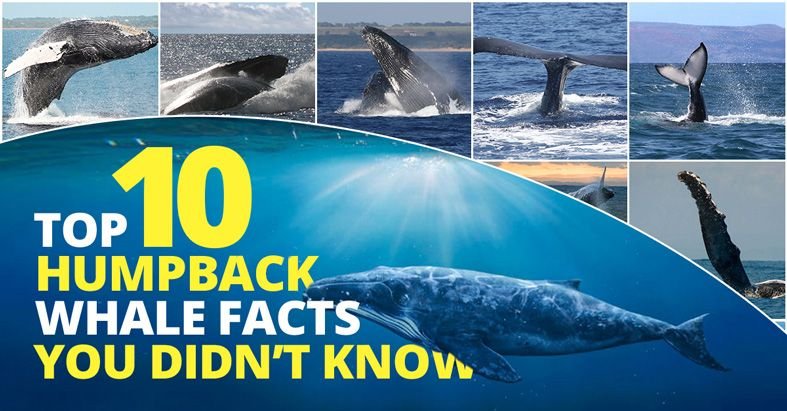
Now, let’s dive into some cool facts about the humpback whale. Whether you’re an ocean lover or just curious about these incredible animals, you’ll find something new and exciting in the world of these gentle giants.
1. Humpback Whales Love to Sing
One of the most captivating things about humpback whales is their ability to sing. These songs can last anywhere from 10 to 20 minutes and are often repeated for hours. Each male has its own unique song, which can change over time. It’s like they have their own style of music!
Why do they sing, you might wonder? Scientists believe these songs play a role in mating rituals or communicating with one another. Imagine a concert where each whale is trying to showcase its vocal talents. It’s a beautiful and complex part of their behavior, and researchers are still trying to understand all the reasons behind it.
What’s even more fascinating is that these songs can travel for miles underwater. So, if you ever hear a humpback whale song while out at sea, consider it a rare and beautiful experience!
2. They Can Be Massive
Humpback whales are truly gigantic. They can grow up to 50 feet long and weigh around 40 tons or more. To put that in perspective, that’s about the length of a school bus and the weight of a small elephant! Just imagine seeing one of these animals swimming gracefully through the ocean.
Their sheer size can be intimidating, but there’s something majestic about it. When a humpback whale breaches, launching itself out of the water, it’s like watching a nature-made fireworks show. The splash it makes can be heard from miles away!
Understanding Their Size
To give you another perspective on their size, consider their fins. The humpback’s pectoral fins can be up to 15 feet long, which are proportionately the largest fins of any whale. It’s like giving them super-sized wings, helping them navigate the vast ocean with ease.
3. They Have a Unique Feeding Technique
Humpback whales are known for their special feeding method called bubble-net feeding. Imagine a group of humpbacks working together, creating a “net” of bubbles to trap fish. They swim in a circle while blowing bubbles, which either confuses the fish or herds them into a tight area.
Once the fish are trapped, up to 10 whales can lunge through the bubble “net,” gulping in tons of prey in one go! It’s a remarkable example of teamwork in the animal kingdom. Watching this in action is like seeing a choreographed dance, showcasing their intelligence and adaptability.
4. They Migrate Incredible Distances
Humpback whales are champions of migration, traveling thousands of miles each year. They usually migrate from their feeding grounds in colder waters to warmer breeding grounds. For example, some humpbacks travel up to 5,000 miles from Alaska to Hawaii!
This journey isn’t just about finding warmer waters; it’s also critical for their survival and reproduction. The whales spend their summers in nutrient-rich waters, fattening up before heading to warmer spots to give birth and raise their young. Think about the effort it takes for these creatures to make such a trek—it’s nothing short of awe-inspiring.
The Migration Journey
Along the way, they face various challenges, including predators, changing ocean conditions, and environmental issues. This makes their journey even more remarkable and highlights the resilience of these amazing animals.
5. They Are Acrobatic Swimmers
When you watch a humpback whale, it’s hard not to be amazed by their acrobatics. These whales are known for their incredible breaching, fluking, and slapping the water with their fins. Each move they make can be both a display of strength and a way to communicate.
Breaching is when the whale propels itself out of the water and lands back with a huge splash. It’s not just for show; researchers believe it can help to shake off parasites or simply express joy. Honestly, seeing a humpback leap out of the water is like witnessing a natural ballet performance—graceful and powerful all at once.
6. Humpback Whales Have a Long Lifespan
Humpback whales are known to live quite a long time, with lifespans typically ranging from 45 to 50 years. Some individuals have been known to live into their 80s! That’s longer than many pets and even some humans.
With such a long lifespan, these whales can experience different environments and see significant changes in the ocean throughout their lives. It’s fascinating to think about how these whales might adapt to changing conditions, making them resilient survivors of the sea.
7. They’re Found All Over the World
Humpback whales are quite the travelers. You can find them in oceans and seas all over the globe. From the warm waters of the Caribbean to the icy regions of Alaska, they are truly adaptable creatures.
During the summer months, they often prefer areas rich in food, while in winter, they migrate to warmer breeding grounds. This adaptability allows them to thrive in various environments, making them one of the most widespread whale species.
8. Their Conservation Status is Improving
Many people might not realize that humpback whales were once endangered due to extensive whaling practices. Thankfully, conservation efforts have made a real difference. As of today, their population has seen a significant recovery, with estimates around 80,000 individuals worldwide.
This positive change is a testament to the power of dedicated conservation efforts. It’s a reminder of how important it is to protect these majestic creatures and their habitats. Not only do we get to enjoy their beauty, but our efforts help preserve a crucial part of the marine ecosystem.
9. They Communicate in Various Ways
Humpback whales are more than just singers; they have a diverse range of vocalizations. Beyond their songs, they can use clicks, grunts, and moans to communicate. Each sound serves a unique purpose, from attracting mates to warning others of danger.
Communication is key for these social creatures as they often travel in groups. You might be wondering how effective these communications are underwater. The ocean’s sound waves travel faster than in air, allowing their calls to reach other whales over great distances.
10. They Play a Key Role in Ecosystems
Lastly, humpback whales play an essential role in the health of our oceans. They help maintain the marine ecosystem by influencing the food chain. Their feeding habits can impact fish populations, and their waste products contain nutrients that promote the growth of phytoplankton.
These tiny organisms are crucial to our planet, producing a significant portion of the oxygen we breathe. So, the next time you think about humpback whales, remember their role as unsung heroes of the ocean, sustaining life far beyond their size.
In conclusion, humpback whales are truly remarkable animals with fascinating behaviors and characteristics that inspire awe. From their captivating songs and incredible migrations to their unique feeding techniques, there’s so much to appreciate about these ocean giants. As we learn more about them, we also understand the importance of protecting their habitats and ensuring these gentle giants continue to thrive for generations to come.

